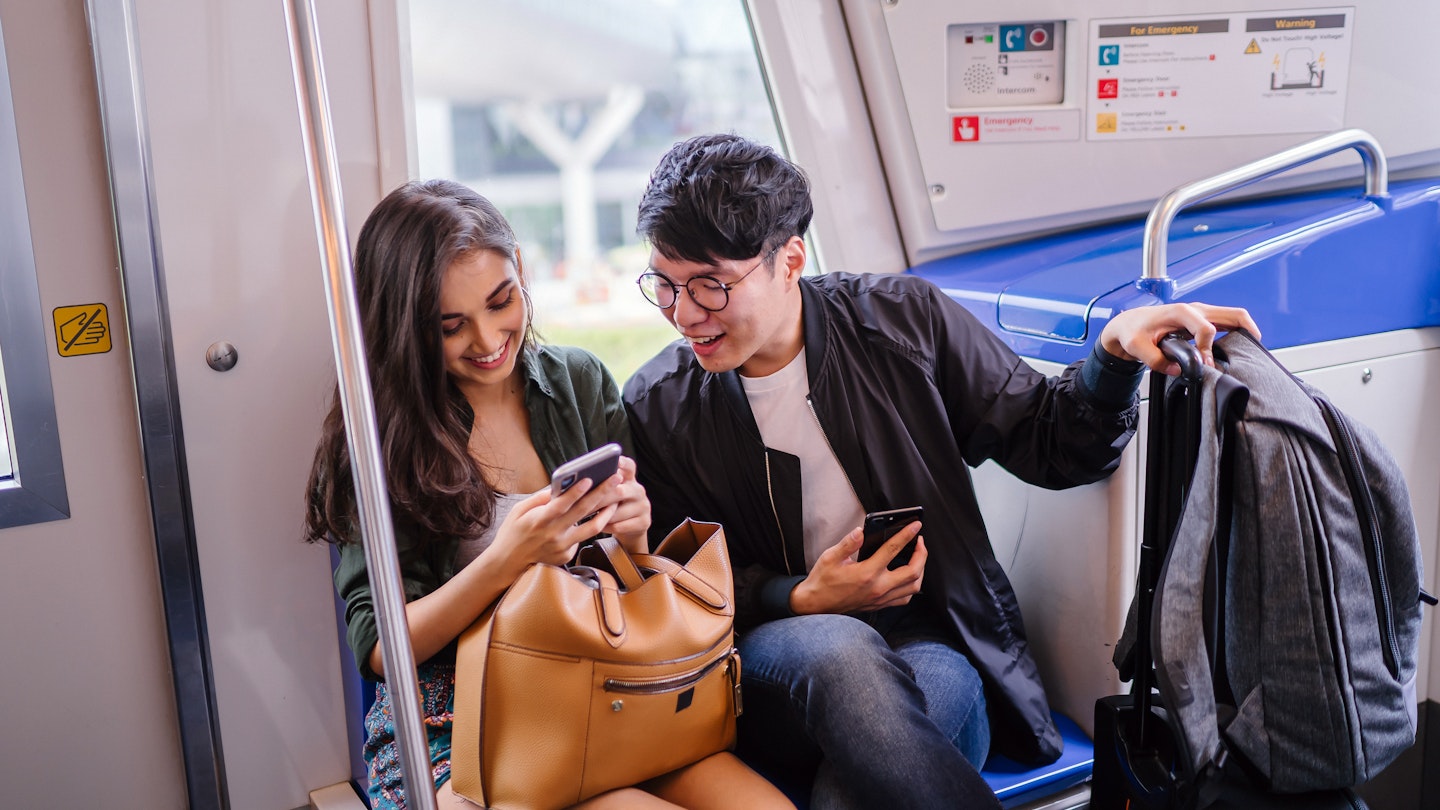Getting Around Singapore: A Practical Guide
Singapore’s extensive public transportation system makes navigating this compact country a breeze. While the cost of living makes Singapore one of the more expensive countries to visit, you can save a bit by making full use of its bus and subway networks. Stretch your budget and see more of this beautiful nation with our guide to getting around Singapore.
Get around Singapore easily on the MRT
Singapore’s subway system, known as the Mass Rapid Transit (MRT), is the most convenient way for travelers to get around cheaply and easily. Hopping on the MRT allows you to avoid traffic jams, although platforms can get quite crowded during morning and evening rush hours.
Navigating the MRT is straightforward for anyone familiar with city metro systems. Currently, there are six MRT lines, each marked with a distinct color, while stations are assigned numbers for easy identification. Station signage and announcements are available in the four official languages: English, Chinese, Malay, and Tamil.

See the sights on a budget with the public bus network
The public bus network is another affordable option for getting around Singapore. While you may encounter peak-hour traffic jams, taking the bus provides a more scenic journey. It can also offer direct connections on routes that may require multiple MRT changes.
Singapore’s bus network is extensive, covering most of the island with frequencies typically ranging from 10–20 minutes. Bus stops have unique ID numbers, and many provide route information. Google Maps is fairly accurate when planning a bus route; alternative apps include Citymapper and MyTransport.sg.
Opt for free shuttle buses
Certain private shuttle bus services may be more convenient than public buses. Notable options for tourists include free shuttle bus lines that circulate around Sentosa Island, weekend shuttles to Kranji Countryside, and the Mandai Khatib Shuttle connecting Khatib MRT Station to parks in Mandai Wildlife Reserve.
Get a transport pass or tap in/out with a local app
To use the public buses or MRT in Singapore, purchase a stored value card (EZ-Link Card) available at all MRT stations and bus interchanges. The SimplyGo initiative also allows users to pay for public transport via contactless debit or credit cards without requiring registration — just tap your phone or card.
Fares for bus and MRT travel are distance-based, so ensure you tap in and tap out to be charged the correct amount. There are no single-trip tickets for the MRT; however, cash can be used on the bus, requiring exact change.
Shared bicycles are good for short distances
Shared bicycles, like SG Bike and Anywheel, can be accessed via an app, offering a cheap, eco-friendly alternative for covering shorter distances. Despite the increasing popularity of cycling, Singapore’s roads may not be well-suited for bicycles, posing challenges due to local driving culture and weather.
Many of Singapore’s green spaces have bike rental kiosks, making it easy to explore parks like East Coast Park and Bukit Timah Nature Reserve.

Ride in comfort via taxi
If time is of the essence or you are traveling late at night, taxis may offer a more comfortable way to navigate Singapore. While taxis cost more, they can be economical for small groups.
Official taxis have a small electronic “Taxi” sign on the roof. You can hail a cab along the road in suburban areas, but it’s advisable to use proper taxi stands in Central Business District. Note that they can be hard to find during rain.
Book a rideshare for convenience
Rideshares are a viable alternative to taxis if you have a local data plan to access apps. While rideshare booking and payment are typically done through the app, surge pricing during peak hours is a possibility.
Grab is the largest rideshare service in Singapore, with other options including Gojek and TADA.
There’s no real need to drive in Singapore
Given Singapore’s compact size and excellent public transport, there is little reason for tourists to rent a car. Most key attractions are well connected by MRT or bus, and opting for a taxi or rideshare is often more economical than renting a vehicle due to fuel and parking costs.
Sail to Singapore’s outer islands on the public ferry
While you can charter a private boat to access Singapore’s offshore islands, the public ferry is the most economical option. To reach Pulau Ubin, head to Changi Point Ferry Terminal where small bumboats make the journey in about 10 minutes.
Regular ferry services to the Southern Islands are available from Marina South Ferry Terminal, providing easy access to notable spots like St John’s Island and Lazarus Island.
Accessible transportation in Singapore
Singapore’s buses and trains come equipped with spaces and ramps for strollers, wheelchairs, and personal mobility aids. Most train stations and bus stops are barrier-free, ensuring accessibility.
Specialized transportation services provide wheelchair-accessible vehicles and medically trained drivers, which further enhance mobility across the city.
This article was first published on Oct 13, 2021, and updated on Mar 8, 2024.





